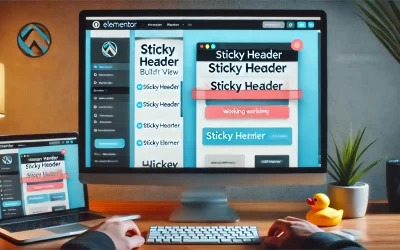Introduction
In the world of web design, creating engaging and interactive elements is key to capturing user interest. One such intriguing feature is a dynamic column scrolling effect, where columns scroll at different speeds, adding a layer of depth and sophistication to your webpage. In this article, we’ll explore how to achieve this effect using jQuery, step by step.
Prerequisites
Before diving in, ensure you have a basic understanding of HTML, CSS, and JavaScript. Some familiarity with jQuery will also be helpful, though not mandatory.
Step 1: Setting Up the HTML Structure
First, let’s set up our basic HTML structure. We need two columns within a main container:
<div id="mainscroll"> <div id="colfa1">Column 1 Content...</div> <div id="colfa2">Column 2 Content...</div> </div>
Step 2: Styling the Columns
Next, style the columns using CSS. We aim to give them equal height and manage overflow:
#colfa1, #colfa2 {
display:inline-block;
float:left;
width: 50%;
max-width:250px;
border:solid; }
Step 3: Introducing jQuery
jQuery simplifies JavaScript operations. Include it in your project:
<script src="https://code.jquery.com/jquery-3.6.0.min.js"></script>
Step 4: Calculating Column Heights
Using jQuery, we’ll calculate the columns’ heights and set them to be equal:
$(document).ready(function() {
var column1 = $('#colfa1');
var column2 = $('#colfa2');
function adjustColumnHeights() {
var shorterColumnHeight = Math.min(column1.height(), column2.height());
column1.height(shorterColumnHeight);
column2.height(shorterColumnHeight);
}
adjustColumnHeights();
$(window).resize(adjustColumnHeights);
});
Step 5: Implementing the Scroll Effect
translateY CSS property allows us to control vertical scrolling. Here’s how to apply it:
function onScroll() {
var scrollTop = $(window).scrollTop();
var translateY = scrollTop * (scrollRatio - 1);
column1.css('transform', 'translateY(' + -translateY + 'px)');
}
var scrollRatio = column1.height() / column2.height();
$(window).scroll(onScroll);
Step 6: Adjusting for Window Resizing
Responsive design is crucial. Here’s how to update column heights and scroll effects on window resize:
$(window).resize(function() {
adjustColumnHeights();
scrollRatio = column1.height() / column2.height();
});
Step 7: Handling Scroll Termination
We need to stop the scroll effect when reaching the end of the shorter column:
if (scrollTop + $(window).height() >= shorterColumnBottom) {
return;
}
Step 8: Adding Final Touches and Testing
Fine-tune the effect by testing on various browsers and devices. Consider adding animations or transitions for smoother scrolling.
Conclusion
Creating a dynamic column scrolling effect is a great way to enhance the visual appeal of your website. With jQuery, implementing this feature becomes a breeze. Experiment with different styles and features to see what works best for your project.
CodePen Url – https://codepen.io/divibench/pen/PoVgLjY
If you have any hard time implementing this please contact us at [email protected]













0 Comments